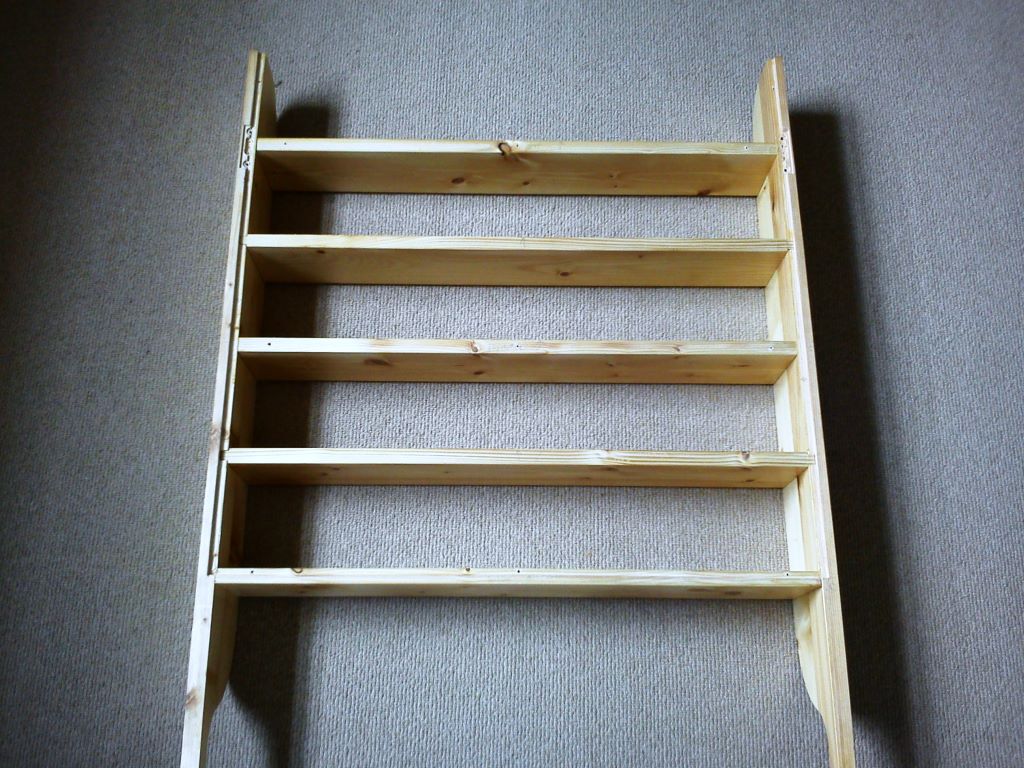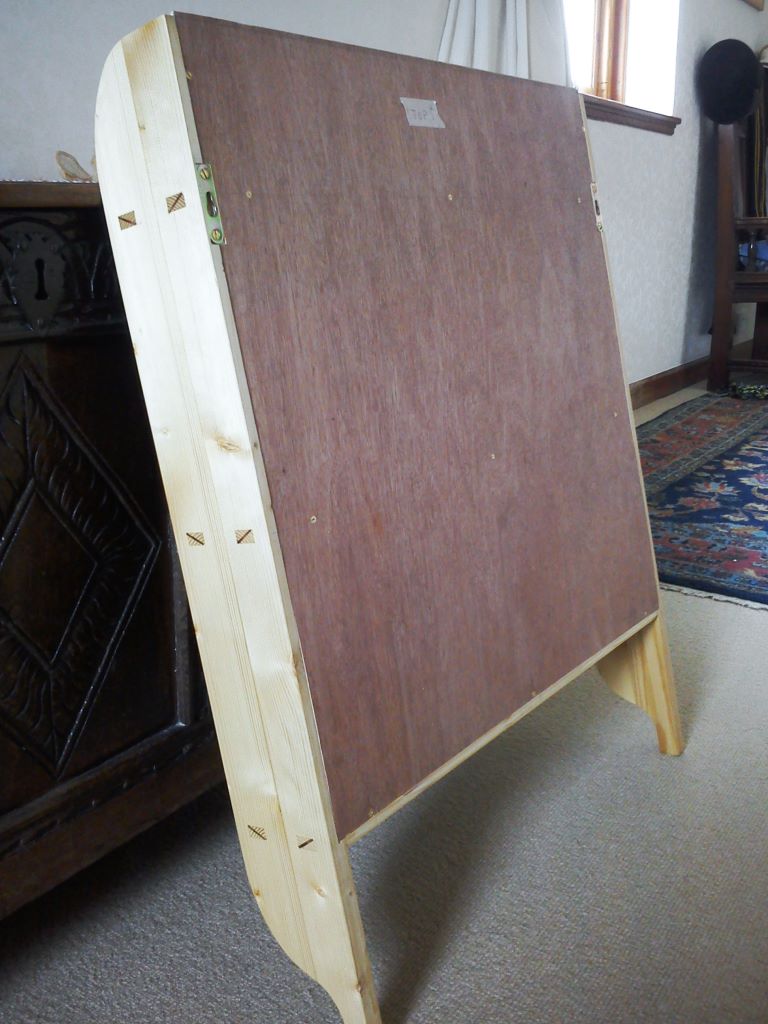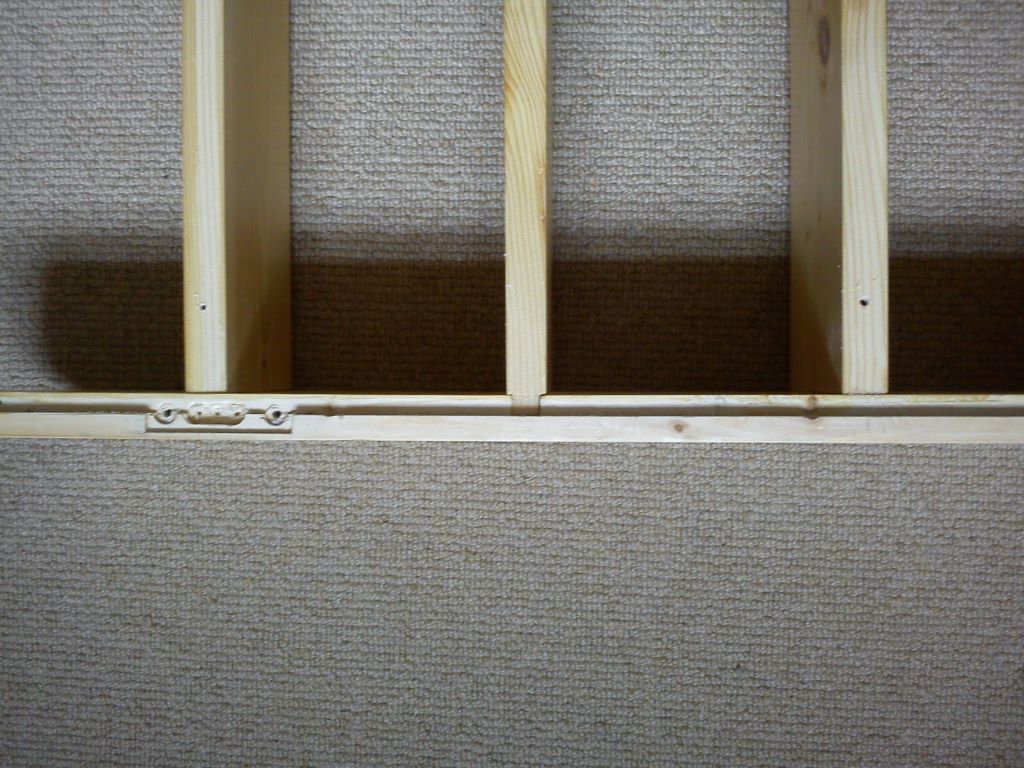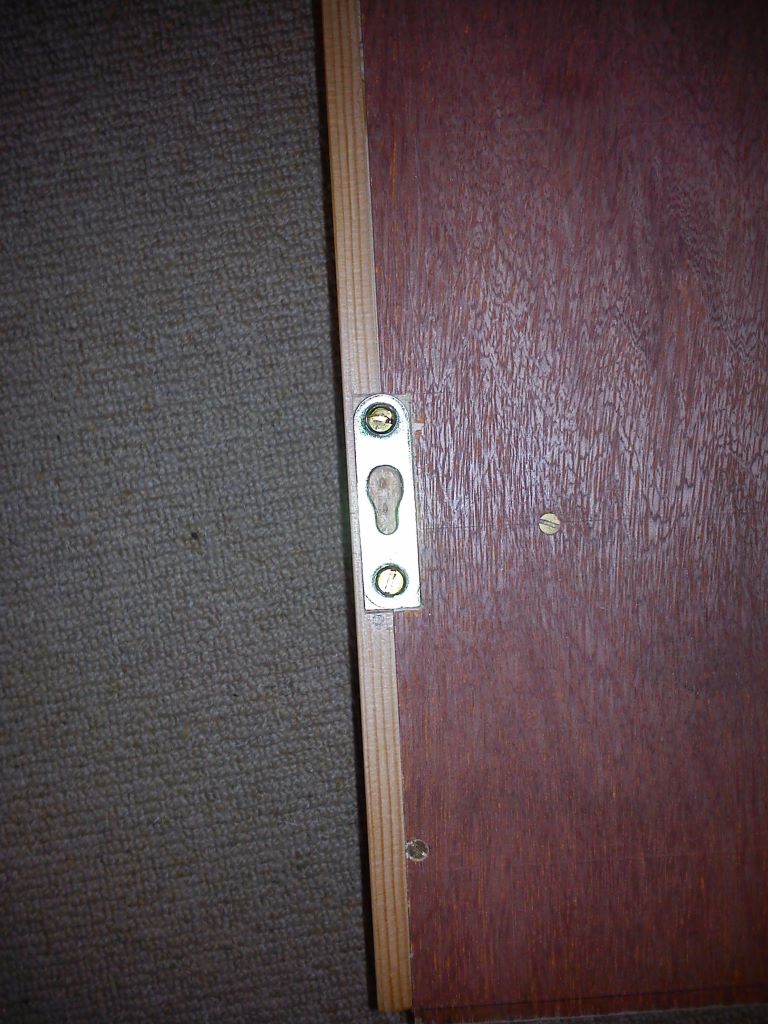Phlebas
Burbling Pixie
Another day, another joint that is new to me. Wedged double through tenons. Or is it twin tenons? To use shotgun parlance, side by side rather than over and under.
So I start off with my usual fine quality timber

This was out of a linen cupboard that we are turning into a larder. Plus an old floorboard that, for some reason, had some 50mm dia holes drilled in it.
My design (if such it can be called) called for three pairs of double through tenons with a connecting haunch (the pictures later should show what I mean), two pairs of slots for intermediate shelves, and a back to be rebated in. So I needed to make some tools.
First up a router thingy. It may look to you like a 6 mil chisel end stuck in a bit of moulding out of a skip, but it is a router thingy to me.

And a rebate plane.
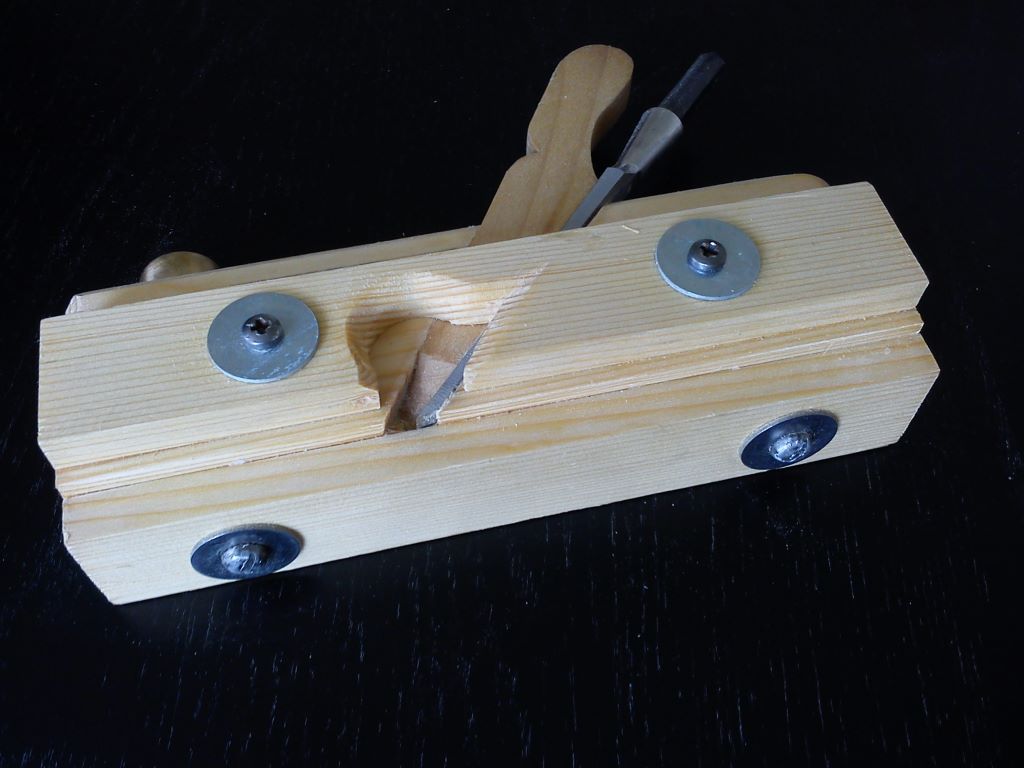

Ignore the bit of cross grain wood showing through the body. It was part of a practice mortice and tenon joint for my work bench, and it was just hanging around doing nothing.
Sooo, much edge jointing, planing, rebating and routing later we have the following set of parts, being pre-finished.
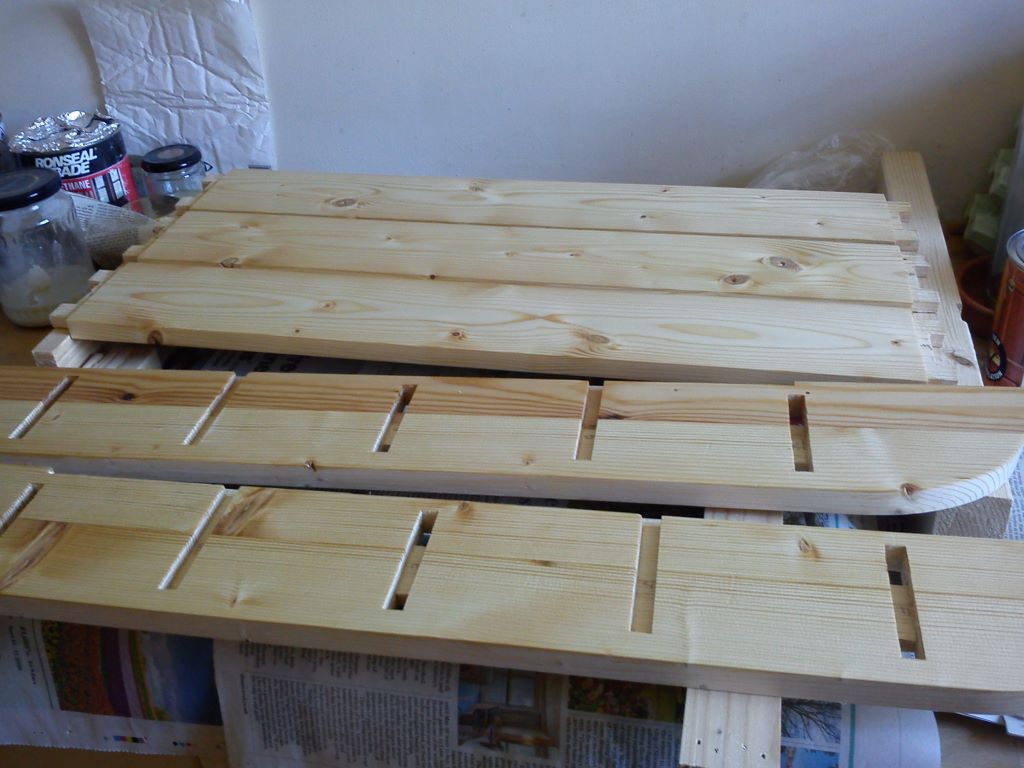
This is a detail of one of the double tenons
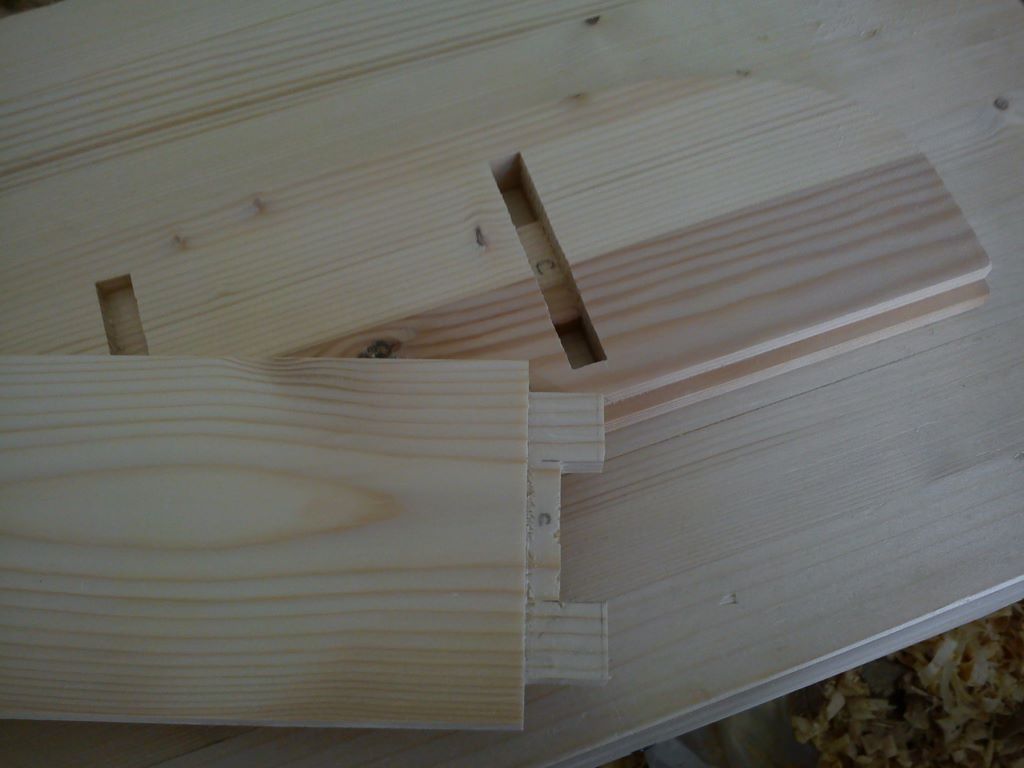
Now I needed to cut the diagonal slot for the wedge. Out of possibly the scrappiest bit of wood off cut I had (which is saying something) I made a jig that slotted over the haunch, to give a guide to cut an accurate (hah) diagonal.
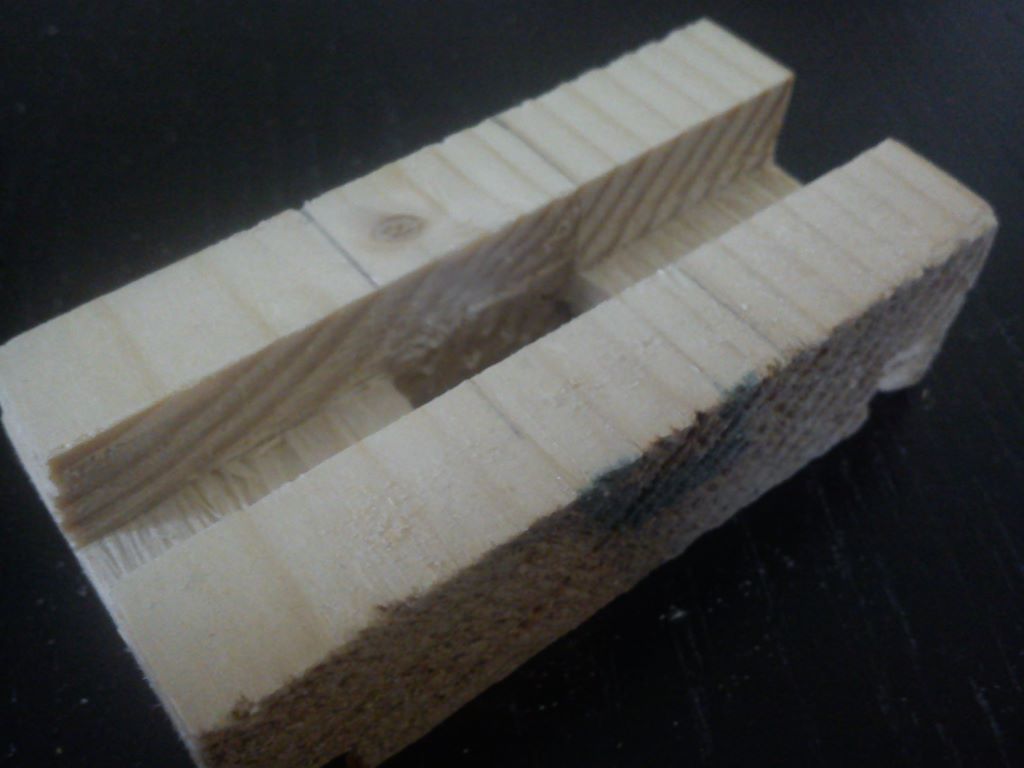

And I needed some wedges. These are from a teeny tiny scrap of plum wood.
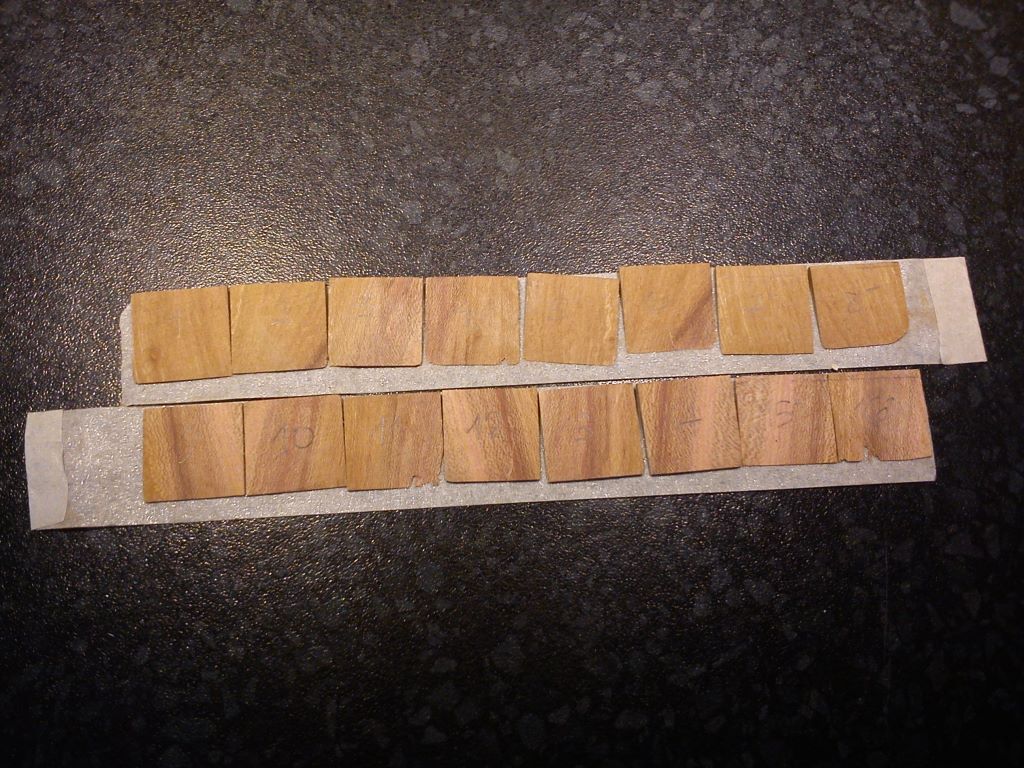
And then there was a glue up. Clamps, glue, knocking in wedges. No photographs. But eventually...
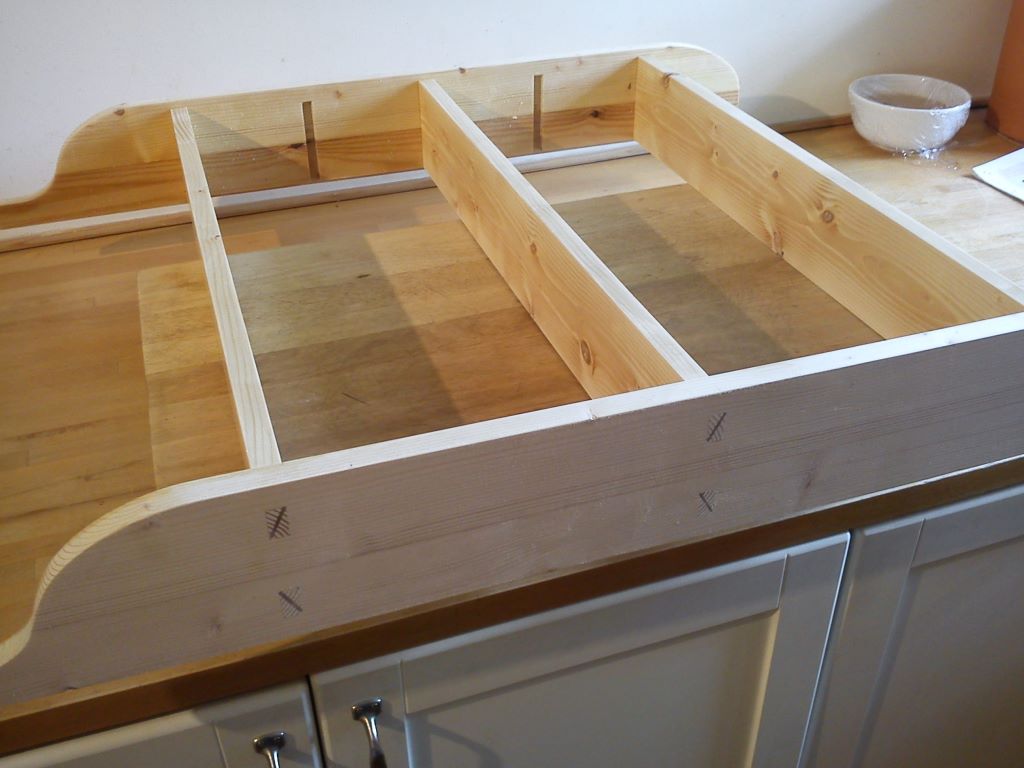
More to follow (if anyone is interested).
So I start off with my usual fine quality timber

This was out of a linen cupboard that we are turning into a larder. Plus an old floorboard that, for some reason, had some 50mm dia holes drilled in it.
My design (if such it can be called) called for three pairs of double through tenons with a connecting haunch (the pictures later should show what I mean), two pairs of slots for intermediate shelves, and a back to be rebated in. So I needed to make some tools.
First up a router thingy. It may look to you like a 6 mil chisel end stuck in a bit of moulding out of a skip, but it is a router thingy to me.

And a rebate plane.


Ignore the bit of cross grain wood showing through the body. It was part of a practice mortice and tenon joint for my work bench, and it was just hanging around doing nothing.
Sooo, much edge jointing, planing, rebating and routing later we have the following set of parts, being pre-finished.

This is a detail of one of the double tenons

Now I needed to cut the diagonal slot for the wedge. Out of possibly the scrappiest bit of wood off cut I had (which is saying something) I made a jig that slotted over the haunch, to give a guide to cut an accurate (hah) diagonal.


And I needed some wedges. These are from a teeny tiny scrap of plum wood.

And then there was a glue up. Clamps, glue, knocking in wedges. No photographs. But eventually...

More to follow (if anyone is interested).
Attachments
-
 Shallow Shelf 1 timber compressed.jpg106.4 KB
Shallow Shelf 1 timber compressed.jpg106.4 KB -
 Shallow Shelf 2 router thing compressed.jpg73.1 KB
Shallow Shelf 2 router thing compressed.jpg73.1 KB -
 Shallow Shelf 3 rebate plane compressed.jpg79.5 KB
Shallow Shelf 3 rebate plane compressed.jpg79.5 KB -
 Shallow Shelf 4 rebate plane compressed.jpg80 KB
Shallow Shelf 4 rebate plane compressed.jpg80 KB -
 Shallow Shelf 5 parts compressed.jpg103.4 KB
Shallow Shelf 5 parts compressed.jpg103.4 KB -
 Shallow Shelf 6 double tenon joint compressed.jpg67.3 KB
Shallow Shelf 6 double tenon joint compressed.jpg67.3 KB -
 Shallow Shelf 7 wedge slot jig compressed.jpg63.6 KB
Shallow Shelf 7 wedge slot jig compressed.jpg63.6 KB -
 Shallow Shelf 8 wedge slot jig compressed.jpg69.1 KB
Shallow Shelf 8 wedge slot jig compressed.jpg69.1 KB -
 Shallow Shelf 9 wedges compressed.jpg188.1 KB
Shallow Shelf 9 wedges compressed.jpg188.1 KB -
 Shallow Shelf 10 glued up compressed.jpg86.1 KB
Shallow Shelf 10 glued up compressed.jpg86.1 KB


































